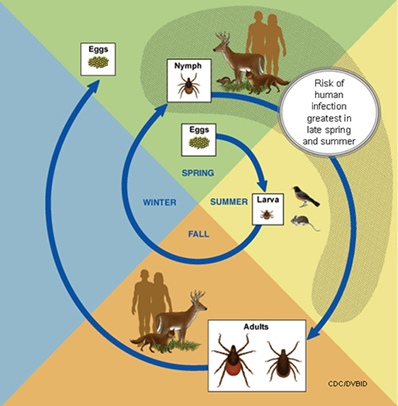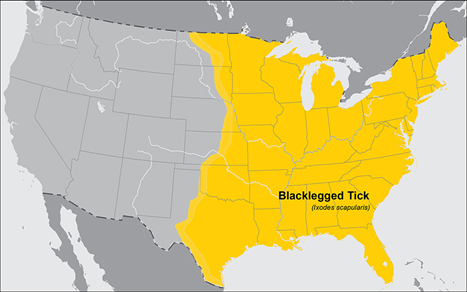American Dog Tick
American dog ticks, also called wood ticks, can be found on the East Coast. From the egg stage, they become six-legged larvae, then eight-legged nymphs, and finally, eight-legged adults. They are reddish-brown, and the female American dog ticks are slightly larger than the male. This species prefers to “quest” for its hosts, meaning it will wait on blades of grass or vegetation for its host to brush by and then climb onto the host. It lives in areas with little to no tree cover. They prefer to feed on dogs and other small animals, when they are engorged, they can be almost fifteen millimeters long! If no food source is available, they can still live for up to two to three years. American dog ticks can cause diseases like ehrlichiosis, and Rocky Mountain spotted fever.
https://tickencounter.org/tick_identification/dog_tick
https://www.cdc.gov/ticks/geographic_distribution.html
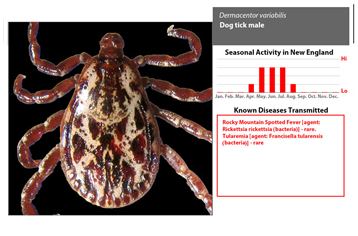
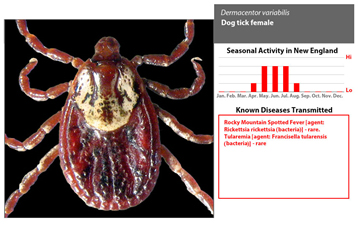
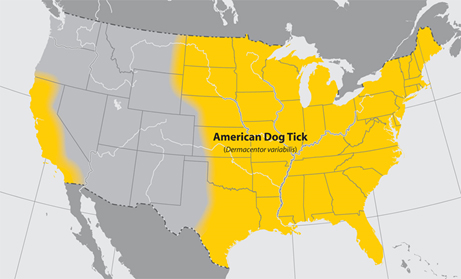
Lone Star Tick
Lone star ticks can be found on the East Coast as well. They are about 5mm long and are a reddish-brown color. Female adults have a distinct white spot on the back, whereas males have white markings/streaks around the edge of their bodies. The female ticks are slightly larger than the males, and when engorged, they can be about 10mm long. Lone star ticks tend to target humans as a food source more than any other ticks species. The Lone star tick cannot survive for long in sunny areas, so it is found in shaded areas where it will “quest” on the tips of grass or other vegetation waiting for a host to pass by. It will then climb onto the host’s body and find a spot to feed. The Lone star tick is a “3 host tick,” meaning it will attach to a different host during each one of its life stages: larvae, nymph, and adult. This species is known to cause tick-borne illnesses such as ehrlichiosis and Rocky Mountain spotted fever. It can also cause a red meat allergy known as alpha-gal syndrome.
https://www.cdc.gov/ticks/geographic_distribution.html
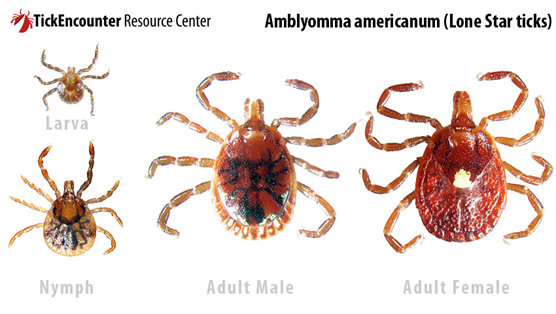
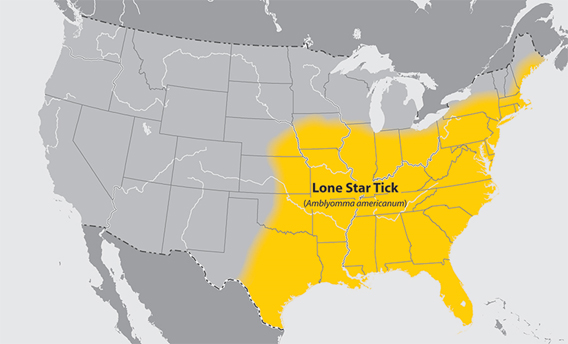
Deer / Backlegged Tick
Deer ticks, also called blacklegged deer ticks, are found in the eastern US. Blacklegged deer ticks have a red/orange-brown body with black legs. They prefer to feed on deer, hence the name deer tick. The females are slightly larger than the males, and they range in size from 2mm to 4mm when not engorged, about the same size as a sesame seed. Blacklegged ticks prefer to hide in the grass or shrubs and wait for a host to brush by. Larval deer ticks prefer to feed on small rodents such as white-footed mice. They will also hide in dens or nests of these hosts to feed on them. Deer ticks feed at each life stage (larvae to nymph to adult), and each time they feed, they have a chance of picking up a disease from whatever animal they feed upon. The next time they feed, they can infect whatever they feed upon, be it human, dog, cat, or other animals. The deer tick is the tick most responsible for the spread of Lyme disease.
https://www.cdc.gov/ticks/geographic_distribution.html
